- News
- Reviews
- Bikes
- Components
- Bar tape & grips
- Bottom brackets
- Brake & gear cables
- Brake & STI levers
- Brake pads & spares
- Brakes
- Cassettes & freewheels
- Chains
- Chainsets & chainrings
- Derailleurs - front
- Derailleurs - rear
- Forks
- Gear levers & shifters
- Groupsets
- Handlebars & extensions
- Headsets
- Hubs
- Inner tubes
- Pedals
- Quick releases & skewers
- Saddles
- Seatposts
- Stems
- Wheels
- Tyres
- Tubeless valves
- Accessories
- Accessories - misc
- Computer mounts
- Bags
- Bar ends
- Bike bags & cases
- Bottle cages
- Bottles
- Cameras
- Car racks
- Child seats
- Computers
- Glasses
- GPS units
- Helmets
- Lights - front
- Lights - rear
- Lights - sets
- Locks
- Mirrors
- Mudguards
- Racks
- Pumps & CO2 inflators
- Puncture kits
- Reflectives
- Smart watches
- Stands and racks
- Trailers
- Clothing
- Health, fitness and nutrition
- Tools and workshop
- Miscellaneous
- Buyers Guides
- Features
- Forum
- Recommends
- Podcast
£2,639.00
VERDICT:
Amazing comfort matched with impressive performance from what is one of the most confident handling bikes on the market.
Weight:
8,900g
Contact:
At road.cc every product is thoroughly tested for as long as it takes to get a proper insight into how well it works. Our reviewers are experienced cyclists that we trust to be objective. While we strive to ensure that opinions expressed are backed up by facts, reviews are by their nature an informed opinion, not a definitive verdict. We don't intentionally try to break anything (except locks) but we do try to look for weak points in any design. The overall score is not just an average of the other scores: it reflects both a product's function and value – with value determined by how a product compares with items of similar spec, quality, and price.
What the road.cc scores meanGood scores are more common than bad, because fortunately good products are more common than bad.
- Exceptional
- Excellent
- Very Good
- Good
- Quite good
- Average
- Not so good
- Poor
- Bad
- Appalling
This is Strael 2.0, Fairlight's updated and refined version of the original Strael which came second overall in the sportive category of the road.cc 2017/18 Bike of the Year awards and snuck into the top ten most impressive bikes that we tested over the year.
All of the great bits are still there. The phenomenal comfort, the high-performance ride and the near custom fit but they've also managed to make it lighter, better looking and all while still maintaining impressive value for money. Oooof!!
Pros: Amazing comfort, incredible ride, quality finishing kit etc. etc
Cons: Na, I'm stuck...
Ride
The Strael 2.0 maintains a lot of the details and design of the original so I already knew how good the ride was likely to be (in fact maintaining the ride ride characteristics of the original Strael was one of the priorities when it came to designing the 2.0, but more on that in a bit) but going out for the first shakedown spin just brought back how truly awesome the Fairlight is to pilot.
The handling is an absolute masterclass thanks to the mix of geometry and tube selections that create a frame in which all the constituent parts work in perfect harmony. The tubes have been selected for their profiles and wall thicknesses which when welded together provides a taut and eager characteristic with plenty of comfort where it is needed.
The fork has been modified from Fairlight's original mould to accept the new 12mm Thru-axle and the tapered head tube, even though it's now running with a marginally thinner wall thickness for a bit of weight saving still provides a very stiff but direct front end.
This combination gives you a lot of confidence, and that grows the more you ride the Strael. The 72.5° head angle isn't as steep as that of a race bike but it has the really planted feel of a race machine and the fact that the Strael feels like a real extension of you means that you push the limits probably further than you normally would on other more performance orientated bikes.
Descending at high speed thrills me and I love to go into a bend, especially a chicane or a really twisty section right at the point where you aren't really sure if you are going to get the bike through it without a bit of line fettling or hauling on the anchors.
The amount of times I reached the bottom of my favourite test hills with a full on adrenaline giggle as the Strael just nailed it became addictive and I soon planned nearly every ride with a do-or-die descent in it.
Normally a bike with such great high speed handling has quite steep angles which can become twitchy at lower speeds or if you aren't gentle with it but you get none of that here with the Fairlight.
Even at slow speeds carving through the city traffic the steering is neutral and easy to live with so when you go long, five or six hours for me and fatigue starts to kick in the Strael remains an easy and controllable bike to ride.
This makes it a great sportive or long distance machine completely backed up by the comfort levels afforded by the various grade Reynolds tubing, especially the rear end.
Occasionally you glance back to check you haven't got a rear puncture due to the shock absorbancey of those seatstays and that's with the 28mm tyres pumped up to 110psi too (110psi! We need to talk about your tyre pressures - ed).
Stiffness is impressive too, it's exactly where it needs to be for the performance levels of the Strael without detracting from the comfort of the ride.
Under hard acceleration the Strael gets a shift on and never feels like it's lacking anywhere plus when it comes to climbing I didn't find the Fairlight wanting either.
The 73.5° seat angle and inline seatpost put me in my preferred forward saddle position which I found efficient for taking on the hills and even when you have to stand up the Strael never lets you down.
Literally for anything other than all out racing the Strael would be my go too choice for a fast, responsive, fun handling bike. The fact it delivers comfort by the bucket load is just the cherry on the cake.
What's new?
When Dom Thomas, the man behind the design of all Fairlight's creations started on the original Strael three years ago disc braked road bikes were still in the early stages of evolution and the whole thru-axle diameter standards debate hadn't really settled on a preferred size which is why they stuck with good old quick releases.
For the Strael 2.0 though things are brought firmly up to date with the inclusion of 12mm diameter Thru-axles front and rear.
The Anraed fork is created from Fairlight's own mould which makes tweaking things much easier than from a generic off the shelf model. Fairlight have redesigned the bottom of the legs to incorporate the Thru-axle but while they were at it they've also increased the steerer length from 300mm to 330mm which has allowed an extra 61cm Tall frameset to be added to the range.
At the rear the dropouts have come in for a complete redesign and judging by the comments on the aesthetics of the original model a lot of you will find that a welcome upgrade.
Most manufacturers braze threaded mounting points into the chainstay for the attachment of flat mount brake calipers but Fairlight have gone for an attachment design that you can see in the photos.
Dom's thoughts behind this (as you can see explained in the First Look video above ) are that Fairlight butted tubes for the rear triangle whereas a lot of manufacturers use plain gauge with thicker wall thicknesses.
He says that the wall thickness of the tube to accept the heat from brazing in the mounts needs to be 0.9mm. The Strael requires a lot less heat with their design which allows them to use a double butted tube of 0.6mm and 0.8mm which reduces weight plus allows for greater comfort.
It also reduces the risk of writing off a frame if the caliper bolt is cross threaded into the chainstay as a replacement adaptor would have it sorted.
The dropouts are also much smaller and Fairlight have gone with an asymmetric design to save even more weight, about 40g in total. The drive side dropout is much smaller than that of the braking side and for me that really demonstrates the attention to detail that you see throughout the frame.
I mentioned earlier about the new head tube and this latest version is machined from a single billet of Reynolds 631 in Birmingham. It's a minimal upgrade but drops a bit of weight while still allowing the Strael to fulfil the impact testing criteria.
My one criticism with the original was with the cable routing, especially the bosses on the head tube which if you were to run an electronic groupset would sit there all sad and neglected.
Fairlight have got rid of these and designed a new 3D printed cable guide that attached to the bottom of the down tube to deal with the routing of gear cables and the brake hose.
It utilises the Di2 plug for security to keep everything sturdy and in place plus if you do go Di2 for instance you remove the guide and to create a neat and tidy solution. It's a big improvement.
Why mess with it?
The original Strael had such a beautiful ride quality so I'm so glad they haven't changed anything in that department. Dom even mentions in the First Look video that he feels there is little more he could do with this setup to still achieve the overall ride quality or weight while still meeting the ISO testing procedure.
The front end, apart from that new head tube, uses Reynolds 853. In the previous review I mentioned that the top tube was my favourite and it still is. From an aesthetics point of view I think it still looks stunning with its 20x30mm ovalized shape as it blends into the head tube and seat tube.
The thinking behind this, according to Fairlight, is that the 30mm width resists the side to size forces while the 20mm direction allows some flex for comfort.
A similar approach has been applied to the down tube, with ovalising at each end but in opposite planes to resist twisty forces from the steering and pedalling.
The chainstays are Reynolds 631, and while most chainstays we see are oval to allow for heel and tyre clearance, the Strael uses round ones to increase stiffness. The seatstays follow a similar theme, remaining the same diameter from top to bottom, and are made specifically for Fairlight from Reynolds 725.
All of these tubes are joined together in Europe by smooth and tidy welding, giving the frames a top end look and feel, especially once finished off with the deep and very durable paintjob. You can still get the Putty option plus this new Deep Grey option with silver and copper decals, I think it's a beauty.
Bottom bracket wise the Strael uses a threaded option which I think just looks right on a steel bike regardless of the issues of water ingress issues found with various press fit alternatives.
This obviously wouldn't be a four-season machine without being able to take mudguards and you'll find the mounts in the usual places at the dropouts. With guards fitted the Strael will take 28mm tyres and 33mm without.
Fairlight have created a very sophisticated bike frameset here and if you really want to get inside the mind of the designer it's really worth taking a look at their Lookbook which you can download from their website here - https://www.dropbox.com/sh/txxoqyx1082wypz/AACdqtXg1SbSXaxTsXG7e8Gga?dl=0.
Proportional Geometry
We're all different shapes, right? Well, because of this Fairlight has decided to offer each frame size in two different geometries: Regular and Tall.
Basically it comes down to body proportions. I, for instance, have a long torso and short legs, so I was sent a 54cm Regular (54R); if I was the opposite way round – short torso, long legs – it would have been the 54cm Tall (54T).
The difference comes down to tube length. The Regular I tested has a shorter seat tube, longer top tube and shorter head tube than the Tall version. The longer top tube lets me stretch out my torso and get lower.
There are three ways to work out which size bike you need on Fairlight's website: by filling in your measurements, sending them your details from a professional bike fit, or just by sending in the measurements from your original bike.
Finishing kit
We've seen some big price increases in the cycling marketplace over the last year and the Strael hasn't been immune to them. The standard Ultegra mechanical version is £2,599 with our Hope upgraded test model coming in at £2,639, last years equivalent model was £2,399 or £2,439.
For that though you are getting the excellent frameset which you can also buy on its own for £999 which includes frame, fork, headset, seat clamp and cable guide. Not bad for such a quality bike.
Fairlight haven't scrimped on the build either. There is no mixing and matching of components here across the groupset as it's a full Ultegra R8000 setup including the hydraulic disc brakes and levers.
This latest groupset from Shimano is awesome with phenomenal shifting across the chainrings and cassette plus the braking really can't be faulted.
Loads of modulation and top end power from the levers and 140mm disc rotors, pretty much the maximum required for road use on a bike of this setup.
Gearing wise you get as expected a 50/34 compact chainset option but with a wide ranging 11-34 cassette that gives you a decent spread of ratios whether you are climbing or descending plus the cassette doesn't feel too gappy either.
It's good to see Fairlight haven't scrimped on the components either and that it's all from one manufacturer too for that complete and finished look.
You get an FSA SLK carbon seatpost matched to the same range stem although it's alloy rather than carbon plus you get the same brand's Gossamer compact handlebar.
I've seen lots of pricey bikes coming with really budget level components lately to keep the price down so it's great to see Fairlight haven't downgraded anything.
Fabric provide their Scoop Shallow Elite saddle and it's really good indeed with a shape that suits the style of riding the Strael is designed for.
Like a lot of brands lately Fairlight have chosen UK brand Hunt to provide the wheels for the Strael and it proves a good decision. Pretty much all of their range has scored highly in our testing offering great quality without breaking the bank.
The 4 Season Conti tyres specced here really do roll well and aren't heavy at all considering how robust they are. They spin up to speed quickly and certainly don't hamper acceleration or climbing.
Continental's GP4000 tyres were available as an upgrade on the original Strael and they were so popular that Fairlight have decided to make them the default choice and rightly so, I love them.
They are fast and thanks to their compound they are super grippy which really adds to the Strael's confidence inspiring handling.
It's not all speed though as the GP4000's are plenty durable and offer great levels of traction over this cold and wet test period.
Bang per buck
Some may smirk at paying over two grand for a metal bike but the engineering nous of the Fairlight team has resulted in a fantastic bike that surely takes steel towards its performance limit. All those tiny design ideas and minimal tweaks result in a steel masterpiece.
The price may have gone up £200 since we tested the original mainly because of exchange rates but I still think it represents great value for money.
Against the bikes I've personally tested its main competitor is still the Mason Resolution http://road.cc/content/review/152814-mason-resolution-105-hydro purely because of the level of detail that they both employ to push the boundaries of the material to, plus they offer those same four season qualities.
For me the Strael 2.0 takes it though with it's sublime ride, and by refining the aesthetics it has shrugged off its original workman-like persona and is now a rather beautiful bike indeed, in my eyes at least.
Not only that the Strael 2.0 in a standard Ultegra build is £796 cheaper than the Resolution Utegra Hydro (and £500 less than the Resolution 105 Hydro), that's a decent winter bike or a very bling set of wheels.
By taking a look through our bike buyers guide http://road.cc/content/buyers-guide/194720-18-best-steel-road-bikes-and-... you can really see the variation in prices of the steel bikes and frames and for such a small company Fairlight are really giving a lot of them a run for their money when it comes to price.
Conclusion
The Fairlight Strael is simply stunning. The ride is downright amazing and really smashes all the thinking behind various genres in the road cycling marketplaces. A long wheelbase, the ability to take mudguards and even that relaxed geometry doesn't have to mean a slow or unresponsive bike that you can't have fun on.
Verdict
Amazing comfort matched with impressive performance from what is one of the most confident handling bikes on the market.
road.cc test report
Make and model: Fairlight Cycles Strael
Size tested: 56cm
About the bike
State the frame and fork material and method of construction. List the components used to build up the bike.
Frame: Fairlight Strael 853 All Season Road
Fork: Fairlight Anraed Disc Carbon Tapered Steerer
Headset: Fsa Orbit ITA
Seatclamp: Anodized Black Seatclamp with Threaded Insert
Axles: Fairlight 142x12mm Rear, Fairlight 100x12mm Front
Groupset:
Chainset: Shimano Ultegra R8000 50:34
Rear Derailleur: Shimano Ultegra R8000 Gs
Front Derailleur: Shimano Ultegra R8000 Band-On
Shifters: Shimano Ultegra Str8020 Hydro Shifters
Cassette: Shimano Ultegra R8000 11 Speed 11-34T
Bottom Bracket: Shimano Ultegra Bottom Bracket Cups 68mm
Wheels & Brakes
Wheelset: Hunt 4 Season Disc 24/24
Tyres: Continental Gp4000s2 700 x 28C
Tubes: Continental Race 700 x 28-32C
Brakes: Shimano Br8070 Hydro Flat Mount Calipers
Rotors: Shimano Ultegra Smrt800 C/Lock 140mm F&R
Finishing Kit
Handlebar: FSA Gossamer Compact
Seat Post: FSA SL-K Carbon 27.2mm
Stem: FSA SL-K Alloy
Handlebar Tape: Pro Pu Sl Black Tape
Saddle: Fabric Scoop Shallow Elite - Black/Black
Tell us what the bike is for
"The Strael is totally contemporary in its design, its overall aesthetic is the outcome of every tube and detail being individually considered, from custom formed and shaped Reynolds 853 main tubes, to a full carbon fork we designed and manufactured. Every Strael frame is handmade in Europe to ensure the quality of craftsmanship equals that of the design.
This bike is fast yet comfortable, engineered to be stiff enough to give immediate and noticeable power transfer, yet compliant enough to feel nimble and engaging when riding at speed. Add to this the ability to fit full-length mudguards, a rear rack and large volume road tyres (up to 32c) and this becomes a true 'year round' British road bike.
Whether it be hot summer days in the mountains, pilgrimages to Flanders in the spring or crisp winter miles down meandering frosty lanes, we have created a bike that will accompany you throughout the transformation of the year.
We've obsessed over the design and tried to evolve the product so that Strael 2.0 is more elegant and refined but without losing any of the utility and functionality of the original."
Frame and fork
Overall rating for frame and fork
10/10
Tell us about the build quality and finish of the frame and fork?
The overall quality of the frame and fork looks great with neat welding and a tough, durable paintjob.
Tell us about the materials used in the frame and fork?
The Strael is manufactured from a mix of Reynolds 853, 725 and 631 steel tubing, with each tube being chosen or custom drawn for Fairlight to do a specific job depending on its position in the frame.
Up front Fairlight has created its own carbon fibre fork with a carbon tapered steerer.
Strael 2.0 now utilises new dropouts for 12mm Thru Axle
Tell us about the geometry of the frame and fork?
Fairlight offers two options in each size with differing geometries, what it calls Proportional Geometry reflecting different body proportions. Full details are in the review, plus the actual charts are here in Fairlight's Lookbook - https://www.dropbox.com/sh/txxoqyx1082wypz/AACdqtXg1SbSXaxTsXG7e8Gga?dl=0
How was the bike in terms of height and reach? How did it compare to other bikes of the same stated size?
Quite long and low for a bike of this type, with a top tube of 550mm against a 130mm head tube. Stack comes in at 551mm with the reach at 386mm, giving a ratio of 1.42, racy.
Riding the bike
Was the bike comfortable to ride? Tell us how you felt about the ride quality.
The comfort levels on the Strael 2.0 is very impressive indeed without ever feeling like it is sacrificing anything in the way of performance. The rear end just removes all road chatter.
Did the bike feel stiff in the right places? Did any part of the bike feel too stiff or too flexible?
Stiffness was spot on for this style of bike. Plenty their if you want to ride it hard without ruining any of the comfort.
How did the bike transfer power? Did it feel efficient?
Yes, power transfer is impressive and the whole bike feels efficient.
Was there any toe-clip overlap with the front wheel? If so
No
How would you describe the steering? Was it lively Lively without twitchiness
Tell us some more about the handling. How did the bike feel overall? Did it do particular things well or badly?
The handling is one of the Strael 2.0's high points, it just flatters the rider whether you are going flat out or going for a cruise and gives you a huge amount of confidence.
Which components had the most effect (good or bad) on the bike's comfort? would you recommend any changes?
The Fabric saddle has a great balance of firmness and comfort plus nothing feels overly firm to cause harshness.
Which components had the most effect (good or bad) on the bike's stiffness? would you recommend any changes?
The Hunt wheels are very stiff plus the compact FSA Gossamer handlebar is stiff enough for even the most spirited of climbing or acceleration.
Which components had the most effect (good or bad) on the bike's efficiency? would you recommend any changes?
An upgrade to Continental GP4000's compared to the Gatorskin's gives a better ride quality with lower rolling resistance.
Rate the bike for efficiency of power transfer:
9/10
Rate the bike for acceleration:
8/10
Rate the bike for sprinting:
8/10
Rate the bike for high speed stability:
10/10
Rate the bike for cruising speed stability:
10/10
Rate the bike for low speed stability:
10/10
Rate the bike for flat cornering:
10/10
Rate the bike for cornering on descents:
10/10
Rate the bike for climbing:
9/10
The drivetrain
Rate the drivetrain for performance:
9/10
Rate the drivetrain for durability:
8/10
Rate the drivetrain for weight:
8/10
Rate the drivetrain for value:
8/10
Tell us some more about the drivetrain. Anything you particularly did or didn't like? Any components which didn't work well together?
The latest R8000 Ultegra groupset is a big step up in terms of performance over the previous model thanks to snappier shifting and excellent braking. It's good to see Fairlight speccing an 11-34 cassette over a 11-28.
Wheels and tyres
Rate the wheels for performance:
8/10
Rate the wheels for durability:
8/10
Rate the wheels for weight:
8/10
Rate the wheels for comfort:
8/10
Rate the wheels for value:
8/10
Tell us some more about the wheels.Did they work well in the conditions you encountered? Would you change the wheels? If so
I've used Hunt wheels on quite a few test bikes now, plus I owned a set for the best part of 18 months, and they are impressive in terms of performance, weight and durability. I certainly wouldn't bother changing them although Fairlight do offer various options.
Rate the tyres for performance:
9/10
Rate the tyres for durability:
8/10
Rate the tyres for weight:
8/10
Rate the tyres for comfort:
8/10
Rate the tyres for value:
7/10
Tell us some more about the tyres. Did they work well in the conditions you encountered? Would you change the tyres? If so
Conti's GP4000's are great tyres offering loads of grip wet and dry plus decent enough puncture protection. They certainly suit the Strael's on road performance.
Controls
Rate the controls for performance:
8/10
Rate the controls for durability:
8/10
Rate the controls for weight:
8/10
Rate the controls for comfort:
8/10
Rate the controls for value:
7/10
Tell us some more about the controls. Any particularly good or bad components? How would the controls work for larger or smaller riders?
The FSA components are a nice selection and work really well with the bike. The Gossamer bar is compact too, making it ideal for the majority of people thanks to its shallow drops – you can use the drops easily even if you aren't the most flexible.
Your summary
Did you enjoy riding the bike? Yes
Would you consider buying the bike? Yes
Would you recommend the bike to a friend? Absolutely
Rate the bike overall for performance:
10/10
Rate the bike overall for value:
8/10
Use this box to explain your overall score
The Strael 2.0 offers an absolutely exceptional ride and the performance is not what you'd expect from the spec sheet, it's a real riders bike. A lot of thought out engineering details have been employed here and that's what you are paying for even though the price is very competitive indeed.
About the tester
Age: 39
I usually ride: This month's test bike My best bike is:
I've been riding for: 10-20 years I ride: Every day I would class myself as: Expert
I regularly do the following types of riding: time trialling, commuting, club rides, sportives, fixed/singlespeed,
Since writing his first bike review for road.cc back in early 2009 senior product reviewer Stu has tested more than a thousand pieces of kit, and hundreds of bikes.
With an HND in mechanical engineering and previous roles as a CNC programmer/machinist, draughtsman and development engineer (working in new product design) Stu understands what it takes to bring a product to market. A mix of that knowledge combined with his love of road and gravel cycling puts him in the ideal position to put the latest kit through its paces.
He first made the switch to road cycling in 1999, primarily for fitness, but it didn’t take long for his competitive side to take over which led to around ten years as a time triallist and some pretty decent results. These days though riding is more about escapism, keeping the weight off and just enjoying the fact that he gets to ride the latest technology as part of his day job.
Latest Comments
- BikingBud 9 min 58 sec ago
His counsel admitted “He took that corner way too fast. It’s something he wishes he could reverse.”...
- slc 14 min 42 sec ago
An excellent plan. In fact the Church Road site has parking spaces for rent from time to time, which are snapped up, though not quite as quickly as...
- Hirsute 23 min 53 sec ago
It's important to look at doge's failings when a handful of people/organisations in the UK think it is something to emulate....
- Vo2Maxi 31 min 25 sec ago
I did indeed! 🤦♂️ Corrected now, thank you.
- Tom_77 35 min 59 sec ago
Eventually managed to get my hands on these, ordered from Cycling 2000 (looks like a few other UK shops also have them)....
- Tom_77 45 min 55 sec ago
My brother bought me this mug - no occasion, just "saw this and thought of you".
- maxdabrit 51 min 15 sec ago
It will be even worse to read when the missing bottle cages are added.
- eburtthebike 54 min 50 sec ago
"A new study suggests that electric scooter schemes appear to reduce the risk of cycling collisions by around 20 per cent — University of Bristol...
- Rendel Harris 1 hour 17 min ago
Indeed, I spent one of the happiest years of my life living in Bath as a postgraduate student, just about that point on your map where Bathwick...







































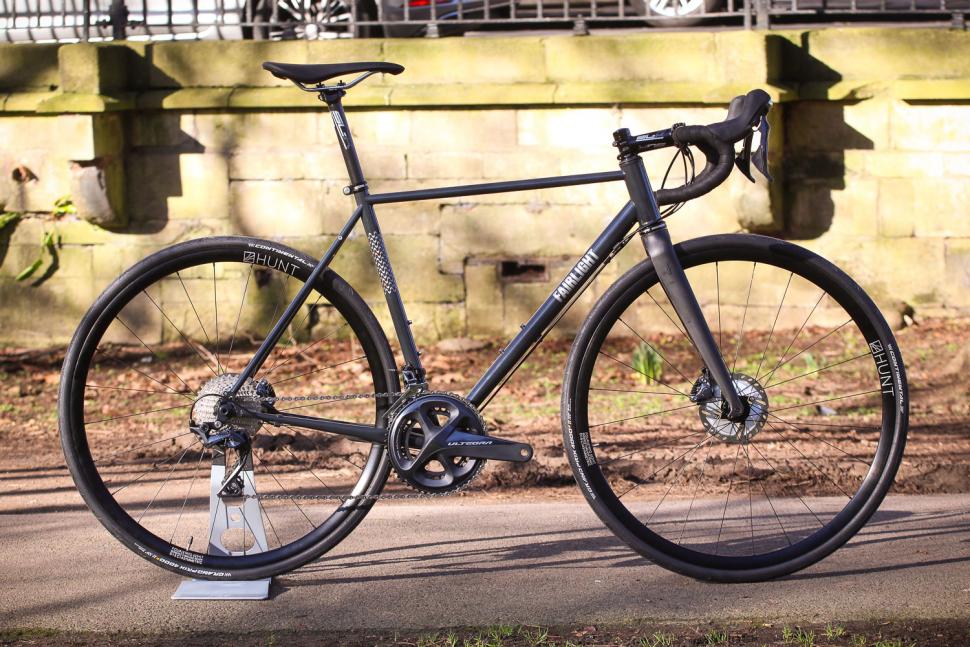

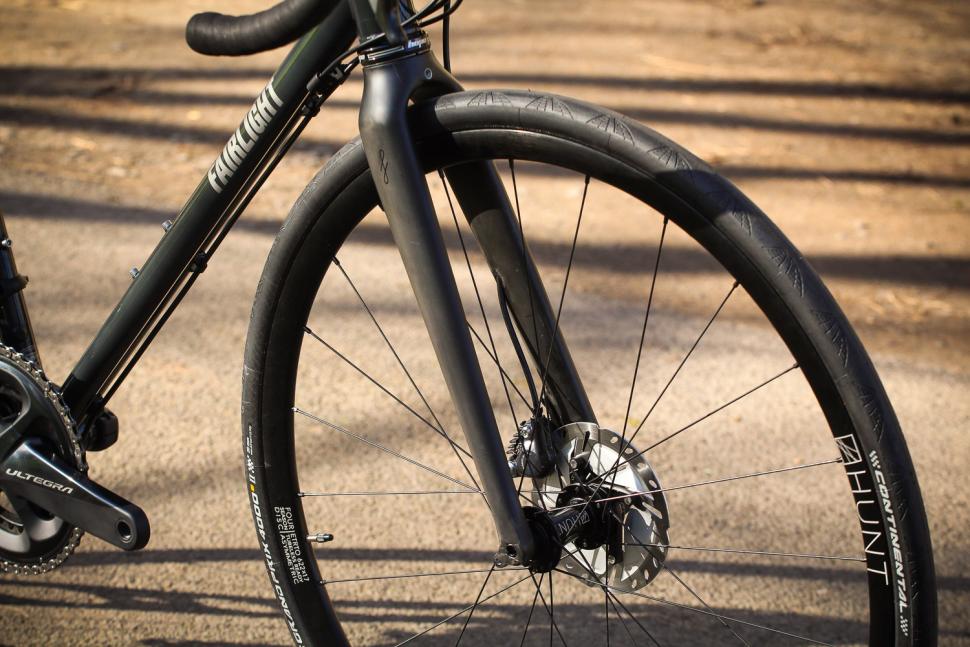
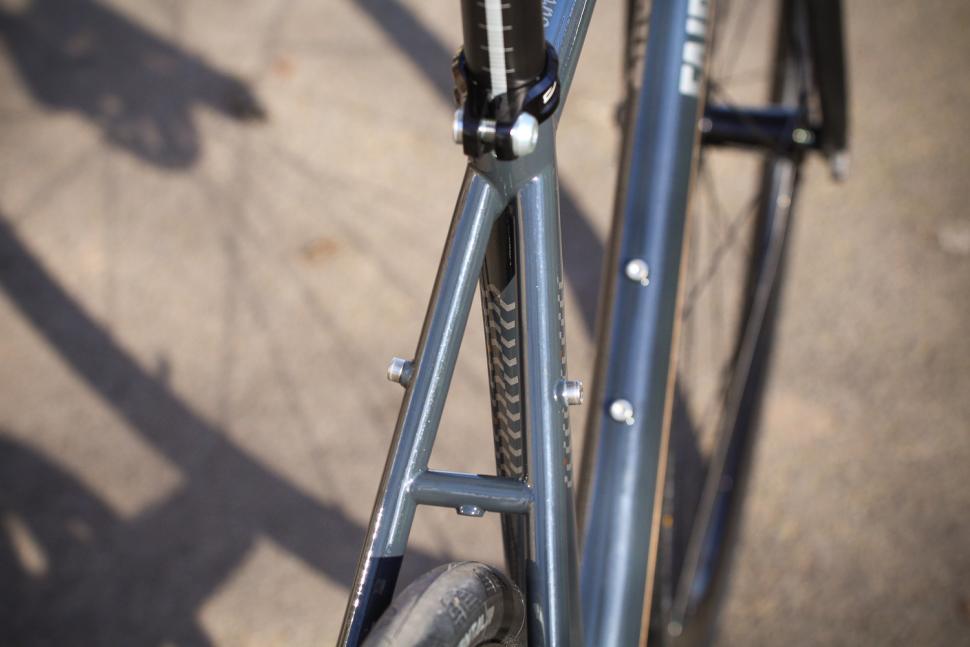
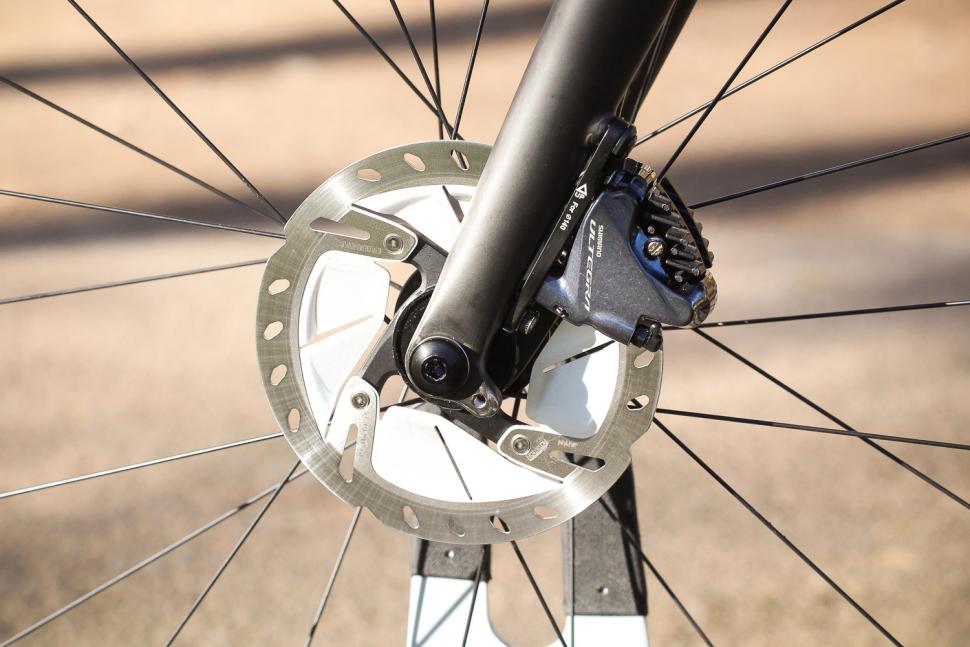

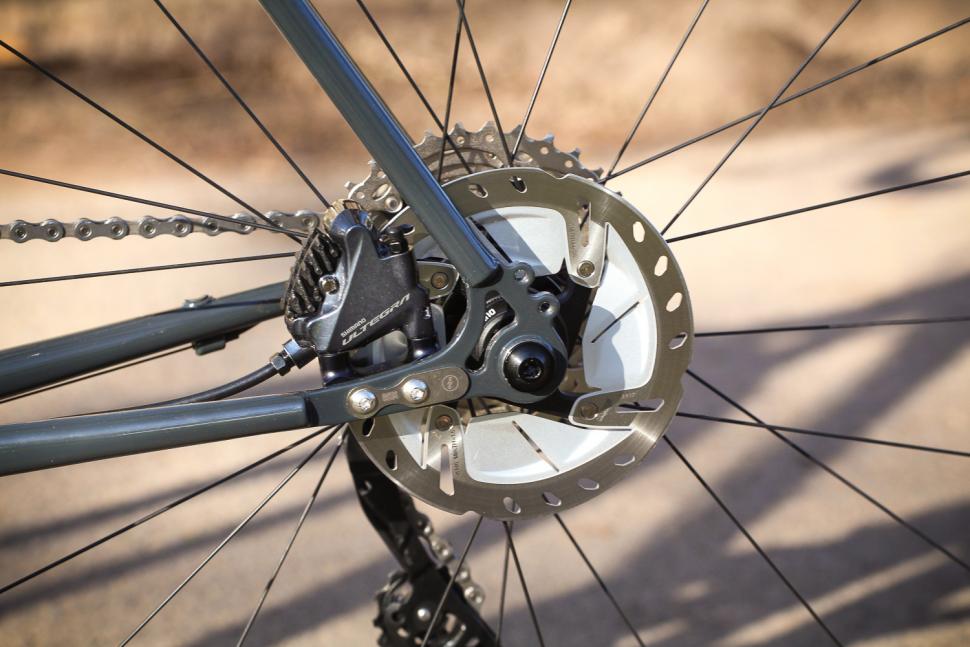
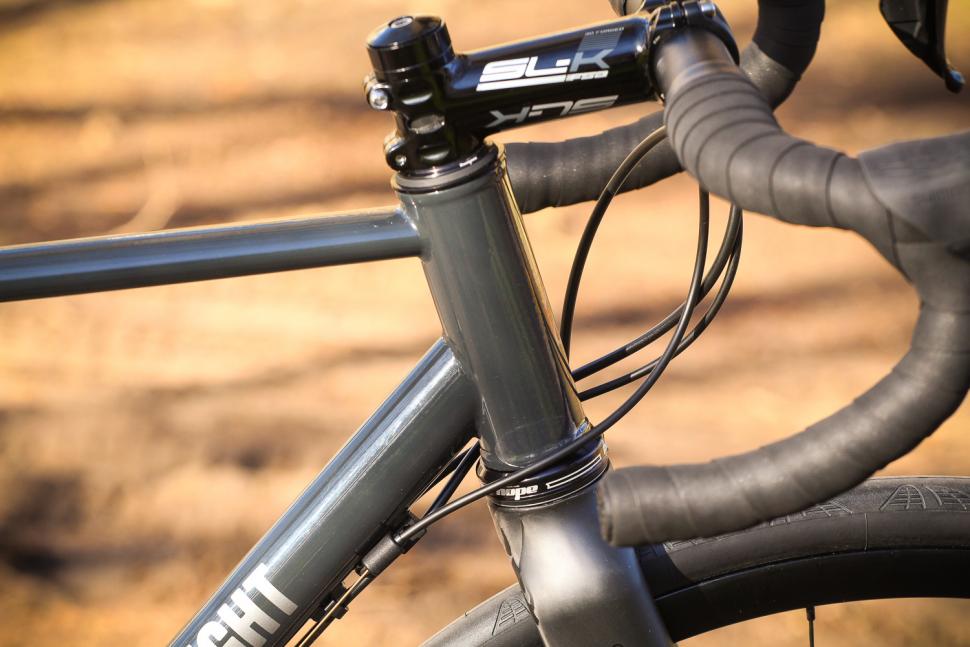
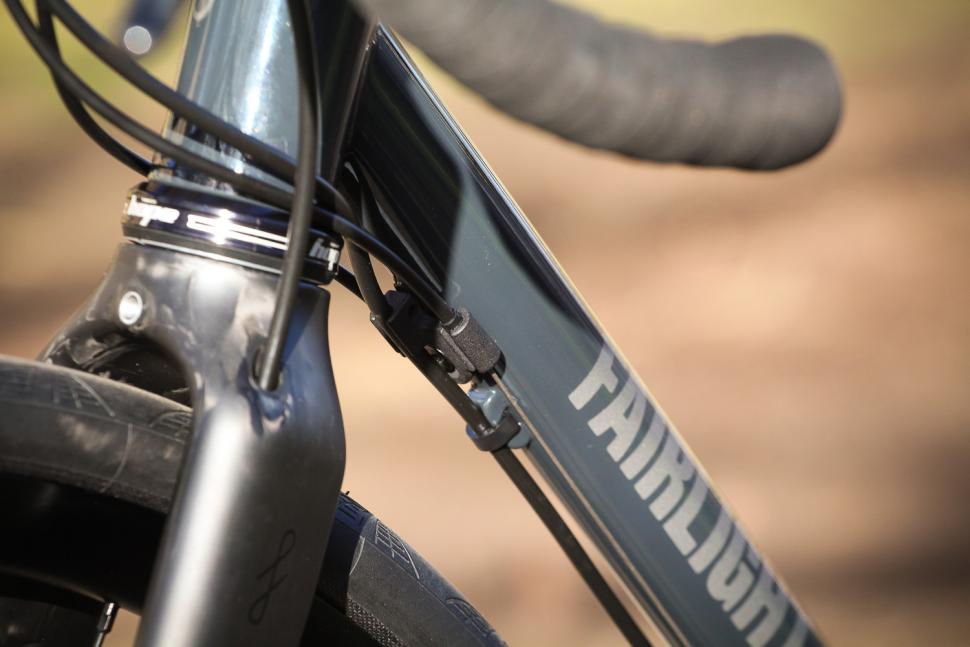
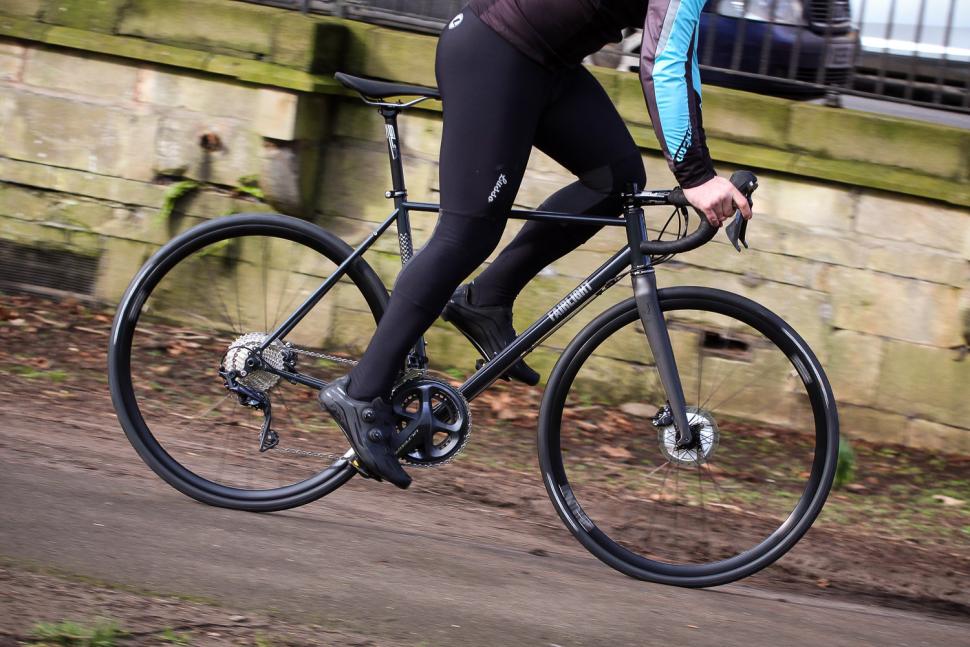
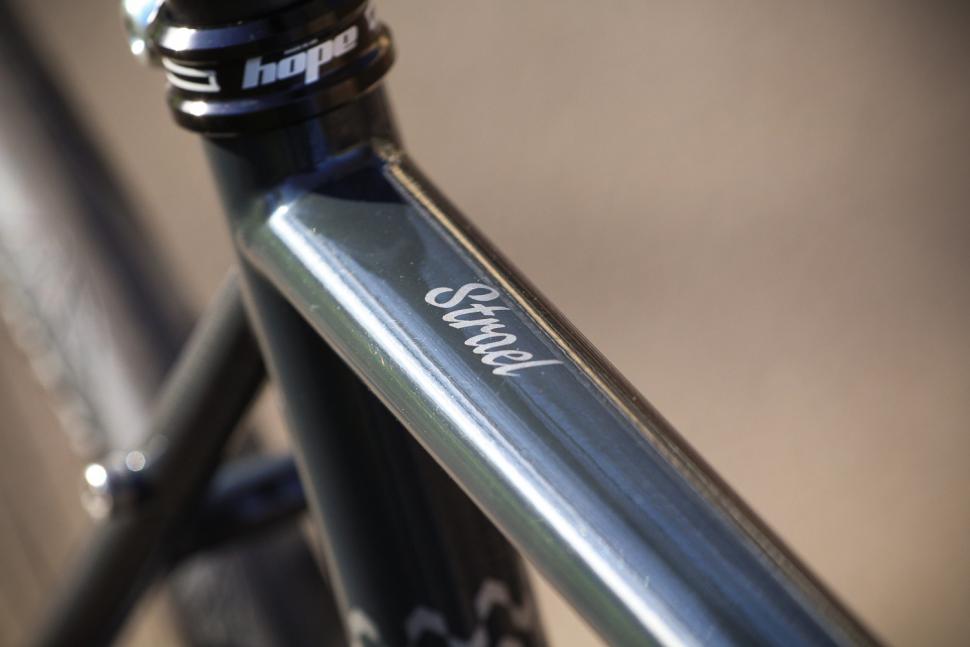

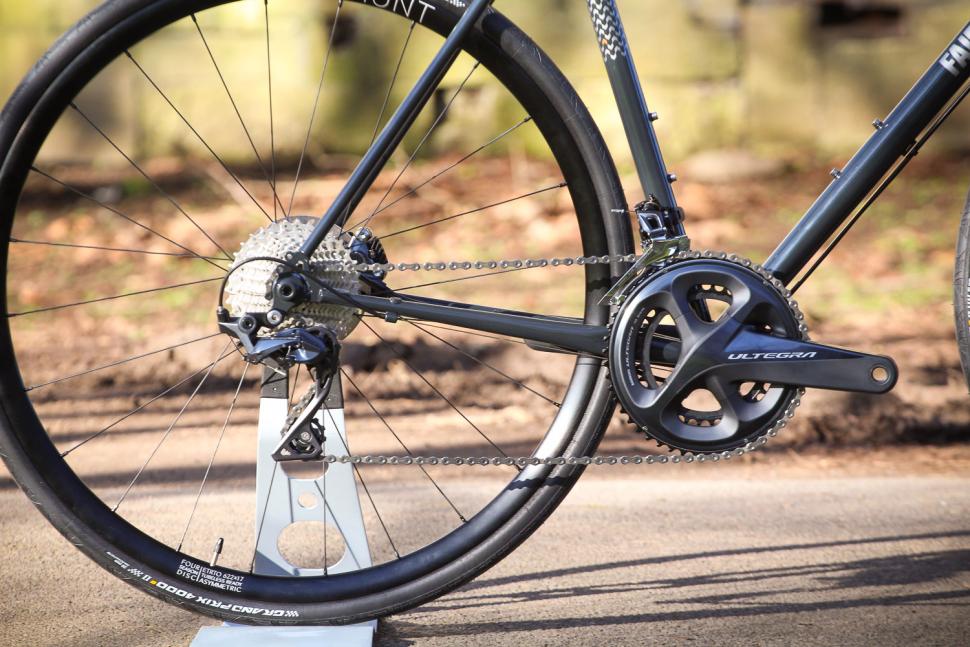
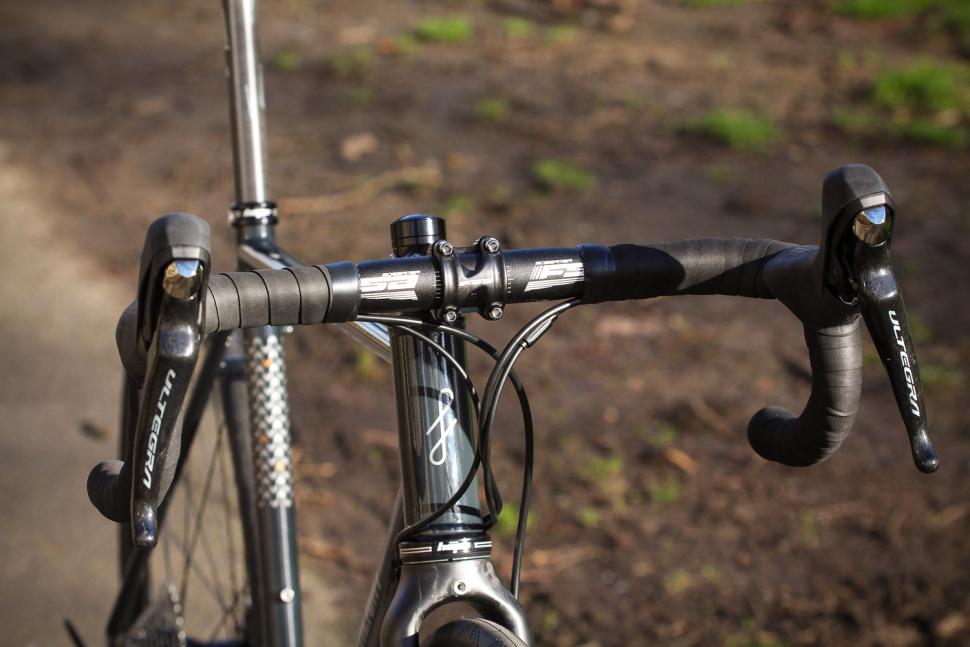
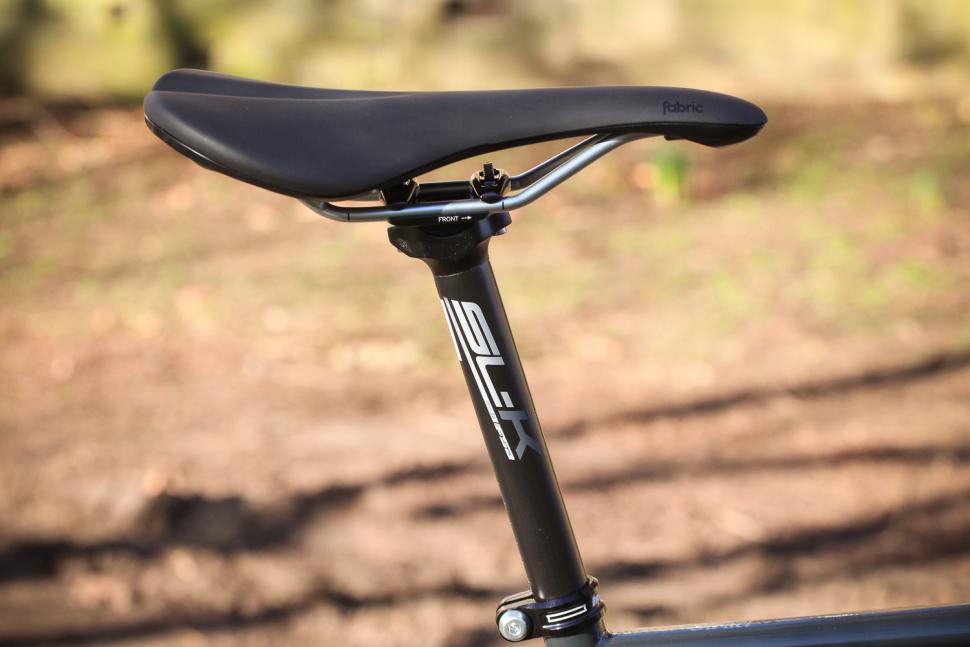
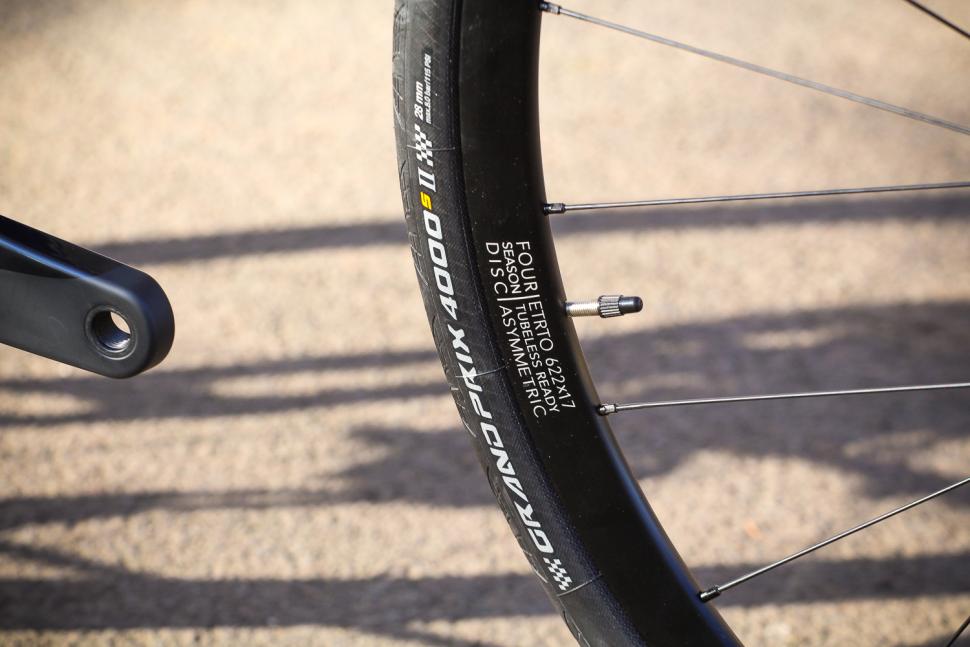




Add new comment
35 comments
@stu Kerton
I wondered what your thoughts on the ride were between the Strael 2 and the Mason Defintion? Got them both in my sights at the moment and noticed you had experience with both, on paper the Strael looks like it could be a bit quicker with the Geo but maybe not enough in it. Is it just an aesthetic decision (and ££) Would be great to get your thoughts!
Sounds like a plan, I'll update the answer on here for anyone else that mioght be interested!
Why don't you email them? They're pretty helpful and can probably answer your questions. Dom from Fairlight appears on here quite regularly to answer questions as well.
Shame as I've got a set sitting on my Slate here but that needs to get punted before I buy one of these! I might just bite the bullet and stick in an order anyway. If I can't fit any bigger than a 32mm I'll just have to get better at handling on gravel rather than relying on bigger tyres!
I don't unfortunately. The other thing to bear in mind is the hub spacing. Disc-equipped road bikes have 100 mm front / 135 mm rear spacing but MTB wheels are now all over the place with, I think, 142 mm pretty standard. Basically, you'd need to fing 650B wheels specifically designed for a road / CX / gravel bike which aren't particularly common.
I've wondered the same thing. I can't see why not on a disc bike so long as you choose tyres that fit between the seatstays and fork crown... .
.
Don't suppose you know anyone with a set of 650b that you could borrow and try? WOuld help my buying decision a great deal!
I know this isn't what this bike is for but could you fit a 650b wheel and bigger tyres for gravel rides? I'm looking for something that'll cover me for all my riding but that also has the stiffness and geometry of a quick bike, hence not the faran.
Dear Stu,
Thanks for this review. Could you tell me why you swichted from a 54R Strael (your last year review) to a 56 Strael 2 ?
I'm the same height as you and my inside leg is about 90 cm (which must be close to yours) and the fairlight size guide recommends 56T (1st choice) or 56R (2nd choice).
However I'm used to 54 frames, I'm wondering if I have to go for 56. Could you give me a clue ?
Cheers,
Jérôme.
Jerome, Dom here. Stu was riding a 54R for this review, exact same set up as the original strael he tested. 56R must be a typo.
Thanks Dom. Do you know why Stu didn't ride a 56, since he's 180 cm tall ?
When Dom sized me for my Faran using bike fit data the 54R was the right size for me, despite nominally being a 56R. He'll certainly work with you to find the right frame spec - I ended up with a 54T because they didn't have stock of the 54R in the colour I wanted (yes I'm a tart) and as a result I've got the stem slammed with a negative rise, a slightly odd look for a tourer 54R would have been absolutely spot on for me in terms of stack and reach.
54R would have been absolutely spot on for me in terms of stack and reach.
Ok, it is much clearer now. Thanks to you two for taking time to answer me, it's very kind of you. Cheers !
Nice bike and nice review.
Someday...
A thing of beauty. A couple of things: I couldn't see the weight. Does anyone know? Also, I wish the cables were routed internally. I know it's a faff but would make the lines even cleaner.
Hi Darren. Glad you like it. The weight of the bike as tested is 8900g, it is published at the very top of the rewiew. Re. internal routing, from day one i ruled it out. I just dont like it on metal frames, way too often a source of rattling and it makes servicing a fiddle. Function before form every time. Dom.
Hi Dom,
Thanks for getting back to me. One more thing to like about you!
I thought the Mason Resolution did a good job of concealing the cables. To me it looks cleaner and aesthetically more pleasing. But I get why you did it and I'm sure I'd be cursing if I had to hear it rattling on a ride.
If I ever sell my flat I'll be popping down for a test ride.
I've been really pleased with my 'original' Strael, fits me perfectly, ride is sublime and no press fit bottom bracket when it comes to maintenance time. I'm taking it with me to the road.cc week in Italy (even though I could just hire a fancy carbon bike) simply because I enjoy riding it so much.
Took mine out for it's maiden voyage yesterday - It's bloody lovely.
Just took the frame and fork, added Ultegra 8020, DCR Wheels and Brookes saddle - looks amazing too.
Mine’s due next week. I’m salivating even more now.
I rather wish you hadn't told me that
I'm another person who wishes a rim brake option was available, if there was then I'd seriously consider getting one.
I've spent too much money on rim brake compatible wheels and groupsets that I don't want to have to sell them and replace them with disk brake versions at great expense.
The 110 psi was purely an exercise in seeing how far I could push the frame in terms of comfort. For the majority of testing I ran the 28's at 90psi but what can I say, I like my tyres pumped up hard and still happily run 23mm and at a push 25mm tyres on my own bikes.
Grrr Tiger!
pumpedup.png
I know its not the way the market is currently but I wish they made a rim brake version of this bike. I'm a very happy Faran owner but wanted something more Strael-like for faster rides, and ended up by a Bowman Layhams (which is awesome, but much more expensive than the Strael).
I guess most of that market (4 Seasons Rim) is captured by Condor Fratellos and various titanium frames but I would have loved another Fairlight to add to the stable. As riding requirements change I can see perhaps selling the Faran frame and building up a Strael 2 frame, but for now I need the big tyres plus mudguard clearance the Faran gives me.
Delighted to see the Strael get such positive reviews - Dom and the guys at Fairlight are offering a near-bespoke service for on off-the-peg price.
+1 to this, had a long look at one of these but ended up going for a Lynskey Ti F&F instead as I could move my existing group set and wheels across. That worked out cheaper even though the frame was more.
A Layhams is no hardship though, beautiful frames, hope you got the red one!
It's amazing. Like the article says, fast and stiff while being smooth and comfortable. The way the steering and handling is described is spot-on. It has an almost telepathic steering style, it almost seems to know where I'm going and do the steering itself regardless of speed.
Edit: I'm 65 kg and run Conti GP GT in 28mm at ~65 psi F and ~70 psi R and might go a bit lower.
So, you like it then?
Really enjoyed this piece, it's a good qualitative article as well as communicating what's new and what the stats are. Cheers!
p.s. 110 psi?!
I'm 179cm and ride a 56R with a 120mm stem. Depends on your proportions I guess and whether you like a small or a larger feeling frame.
Surprised that at 180cm you're on a 54... could you share your reach (tip of saddle to center of bars) and saddle height (centre of spindle to top of saddle through seat tube/seat post)? Always interesting to see what people are doing for setup/fit, especially on bikes that we can't see in person like this. Thanks!
Pages